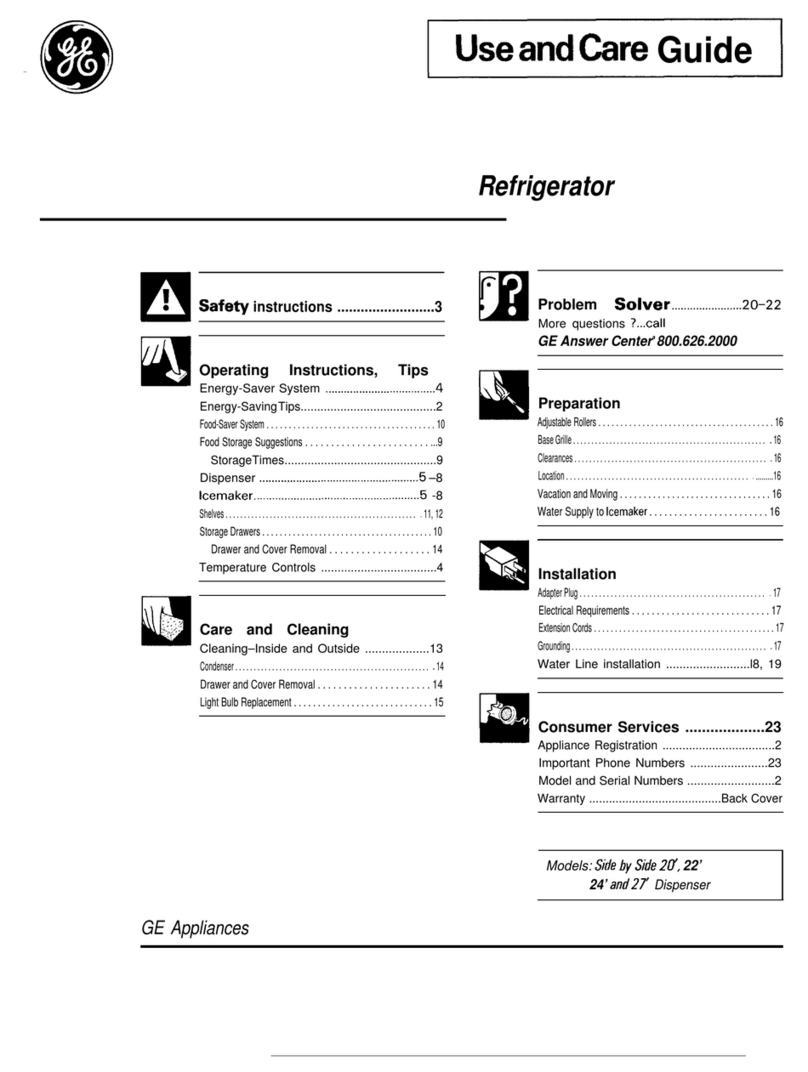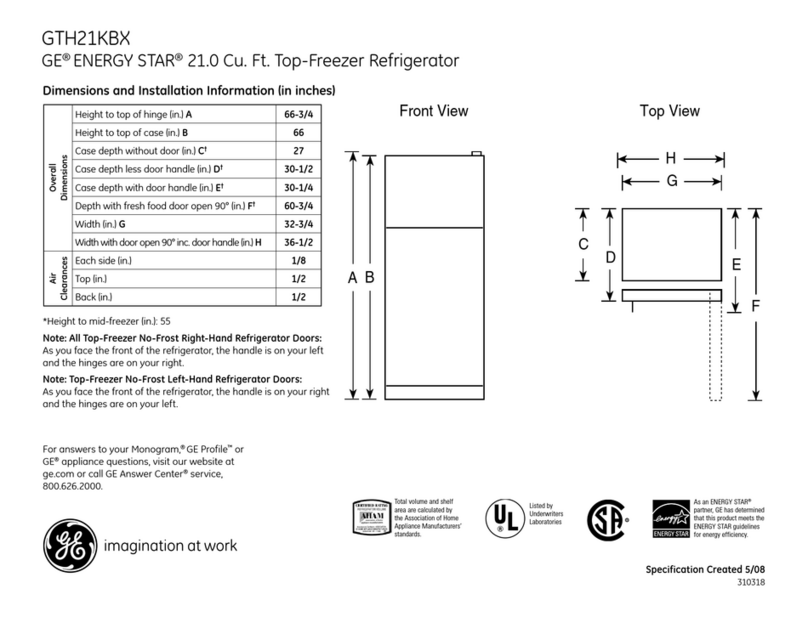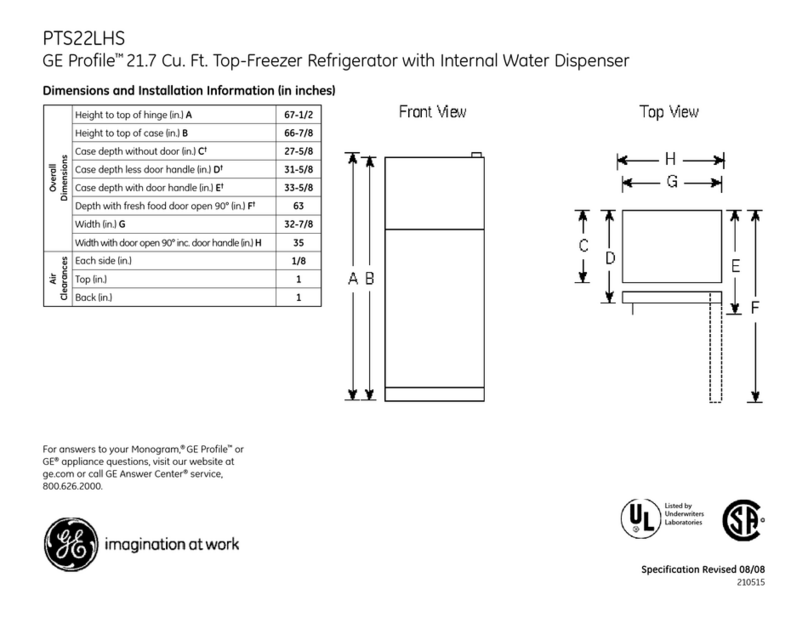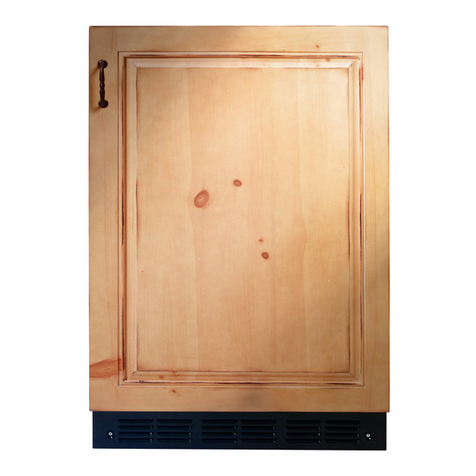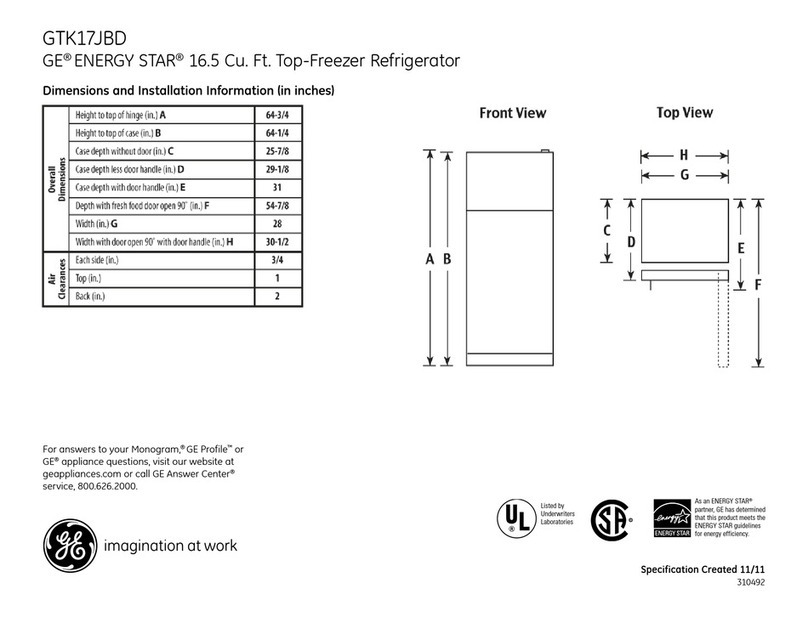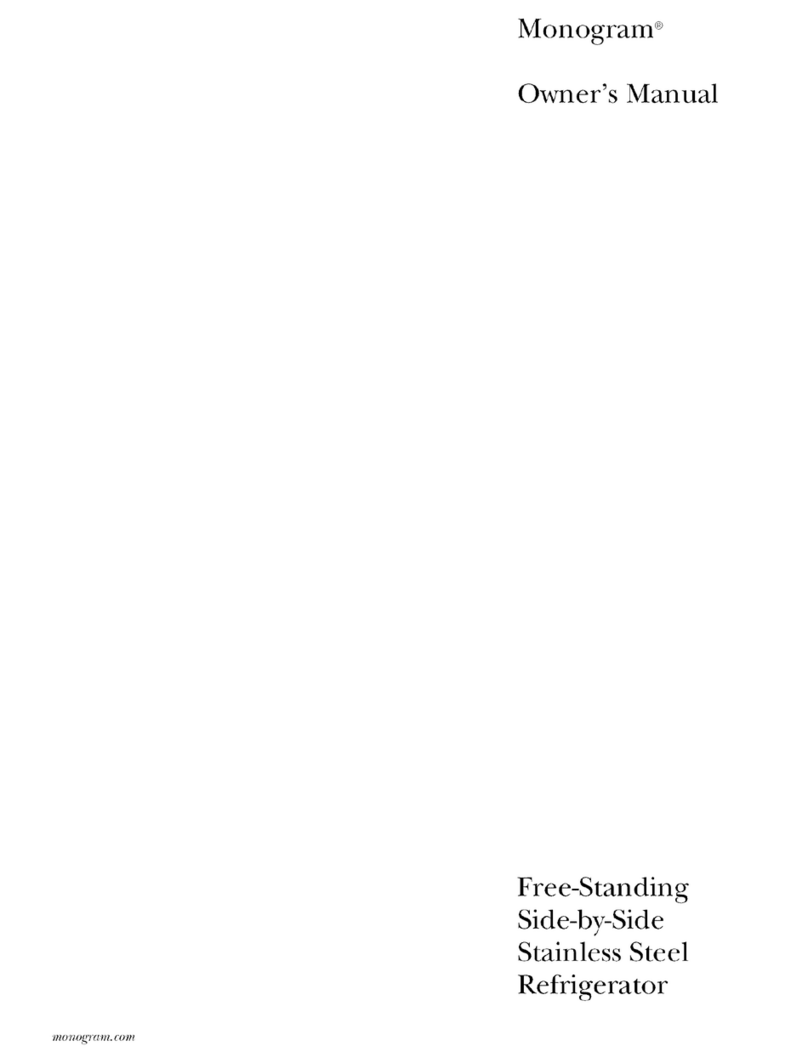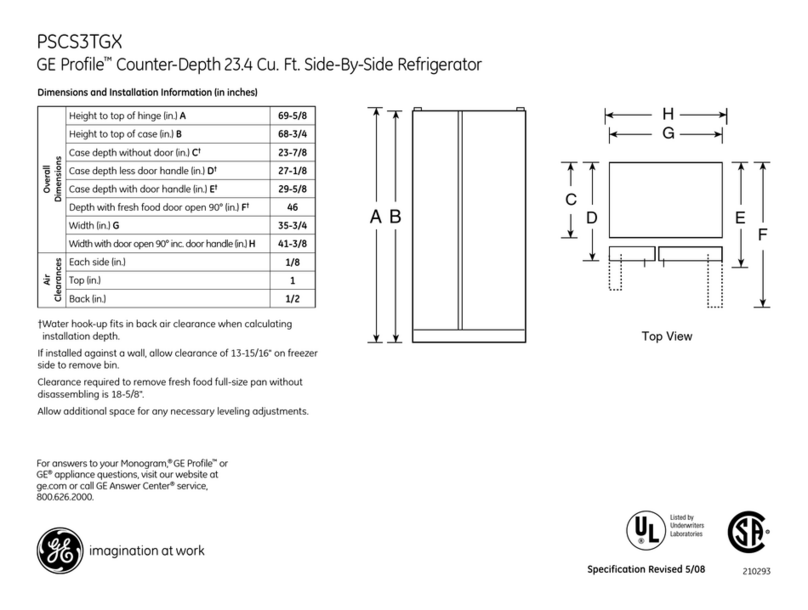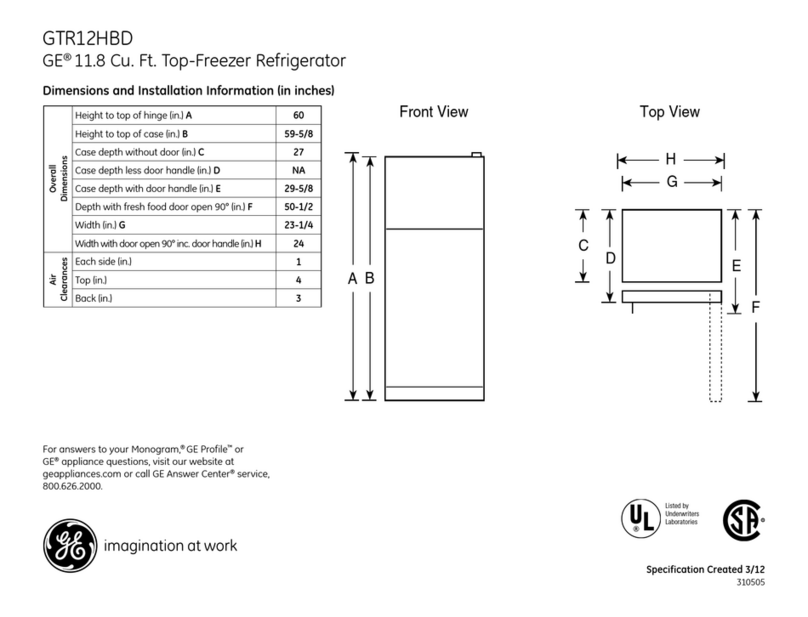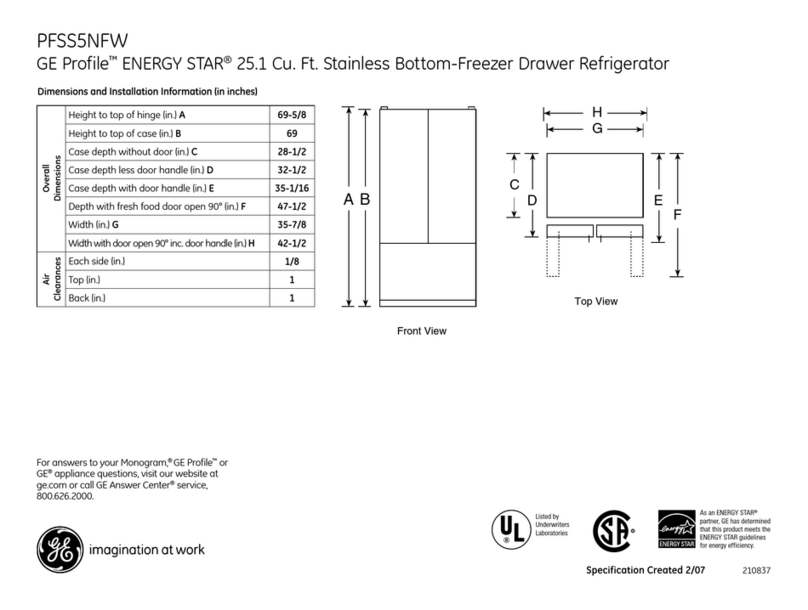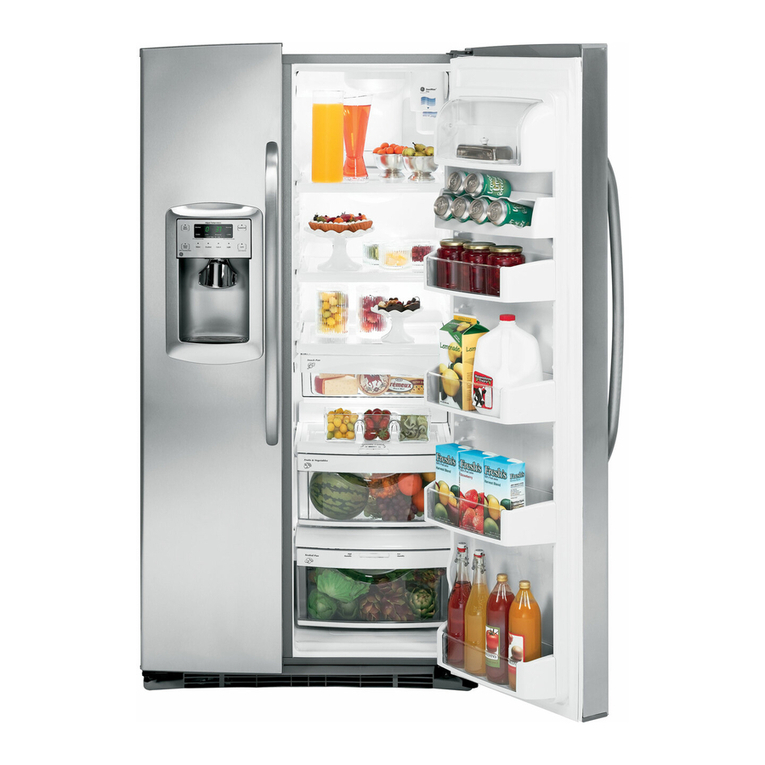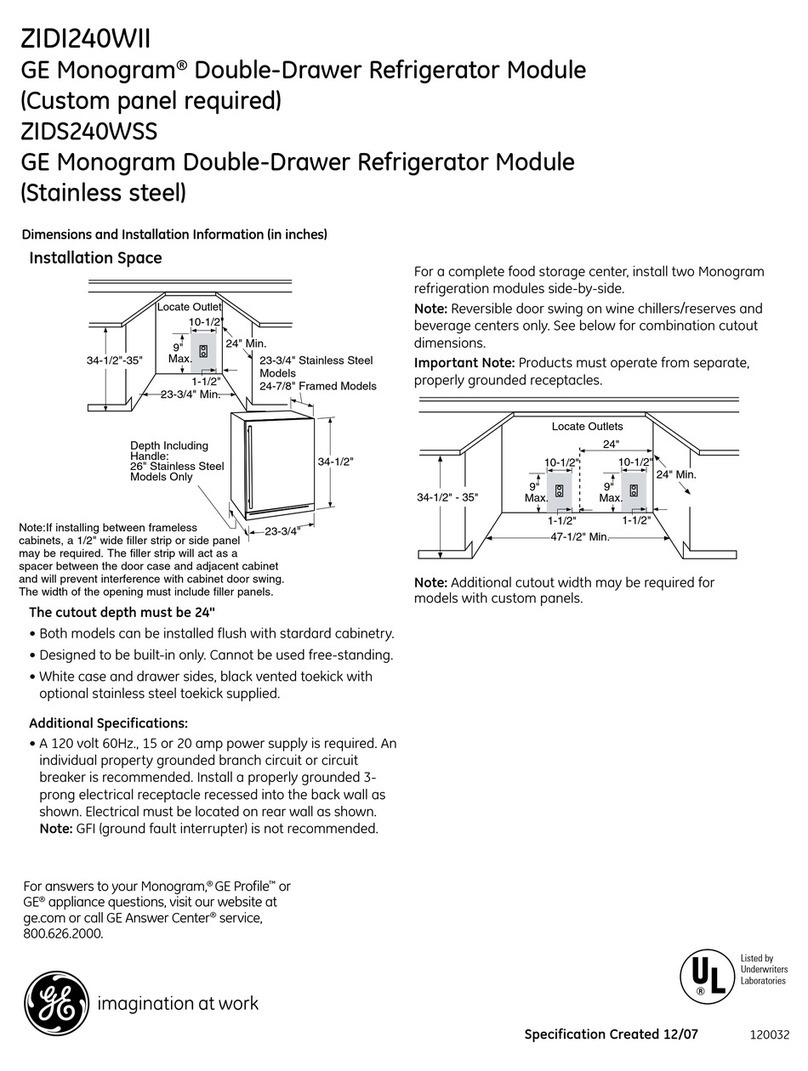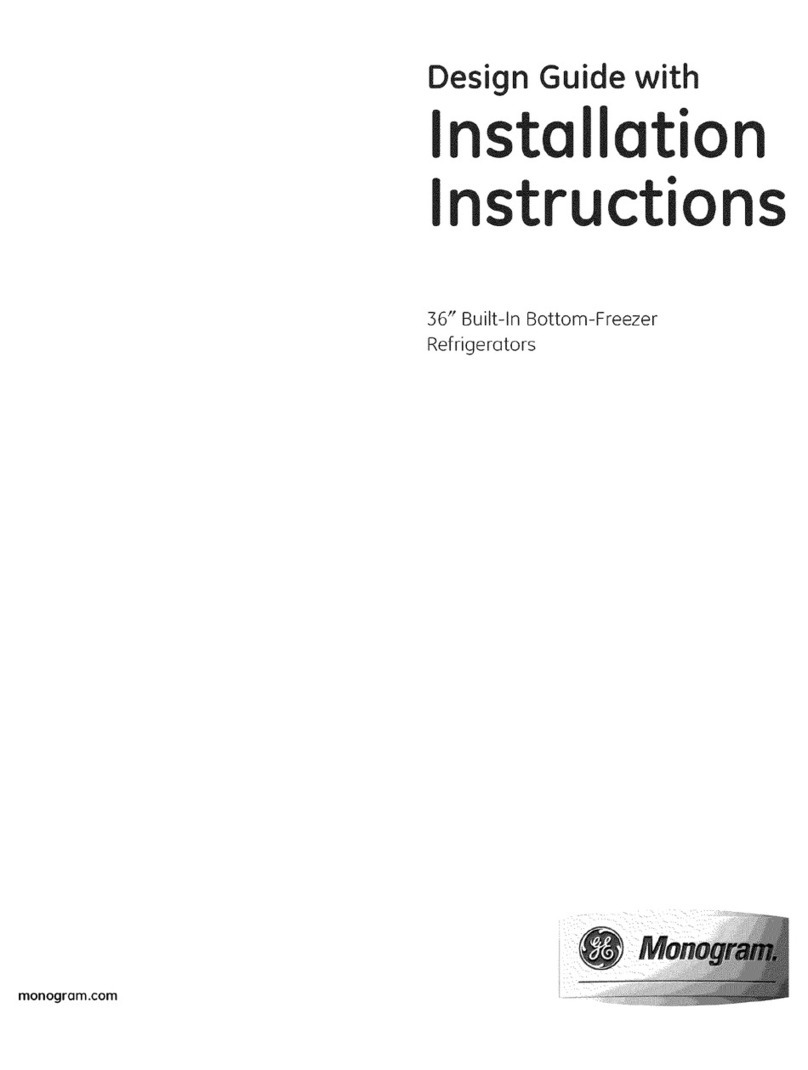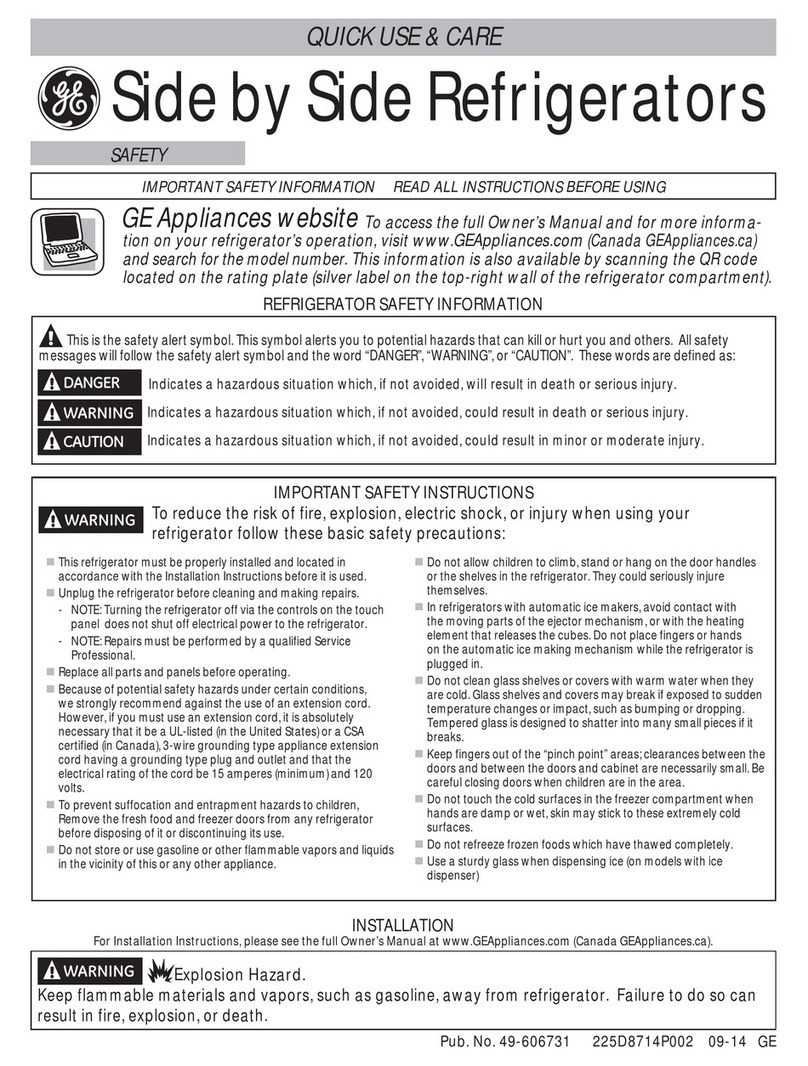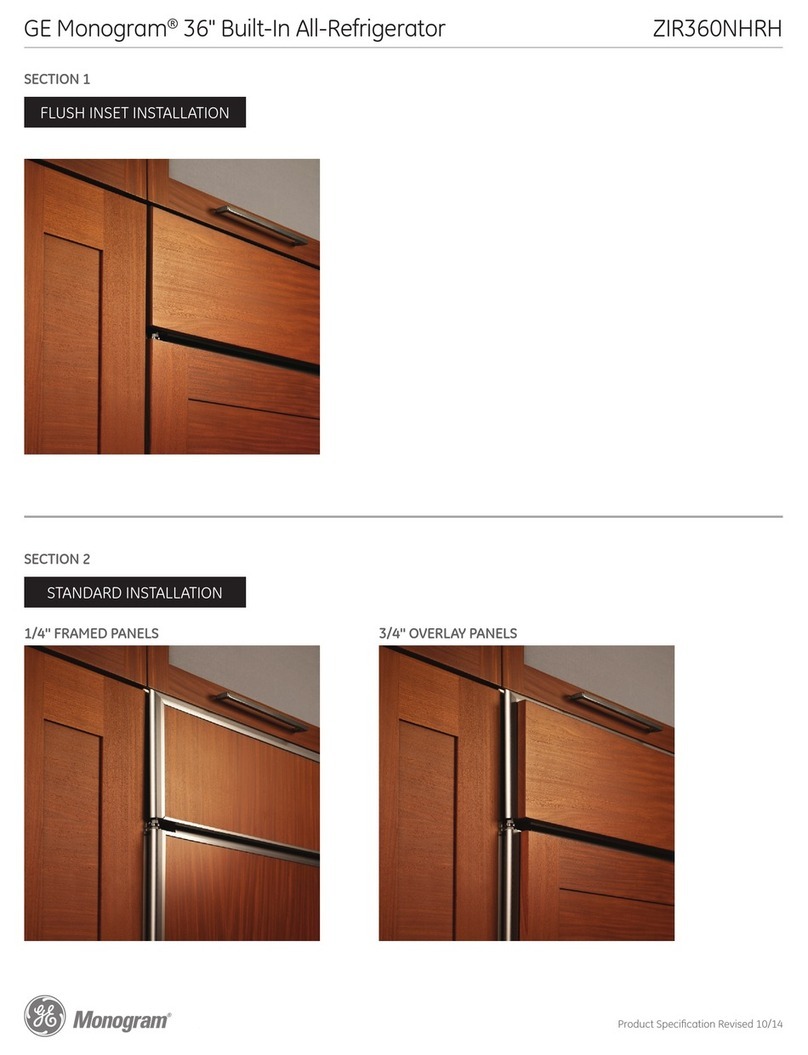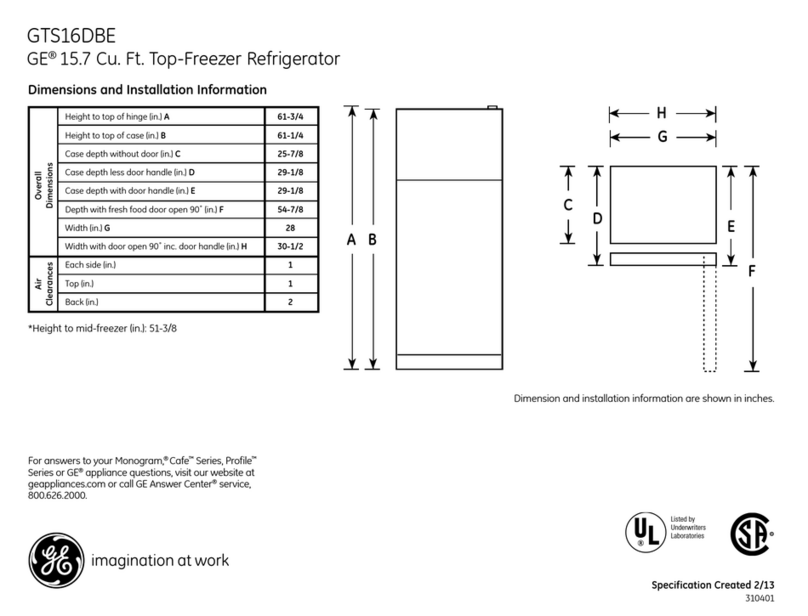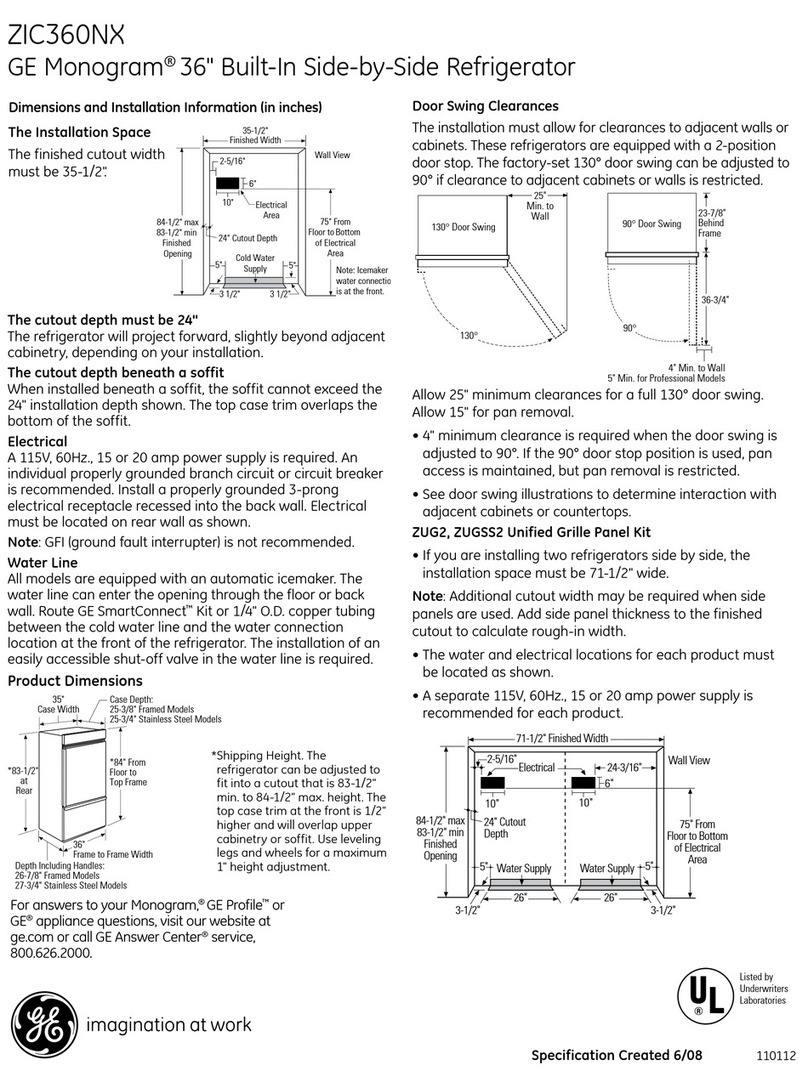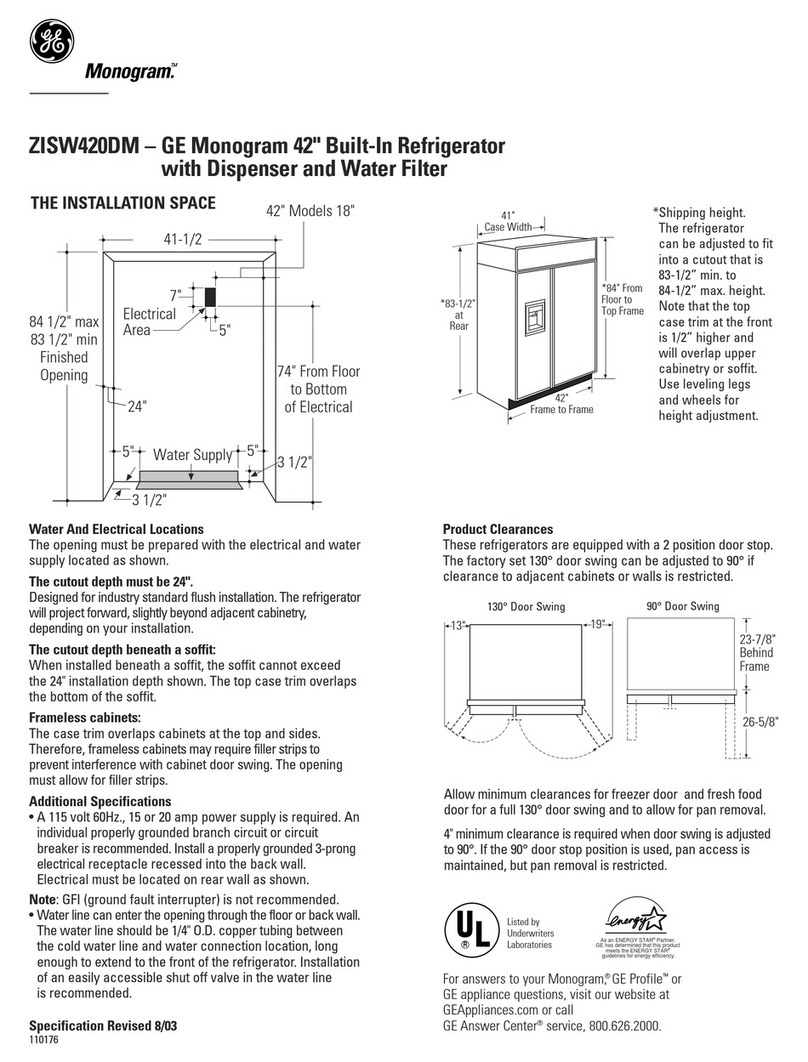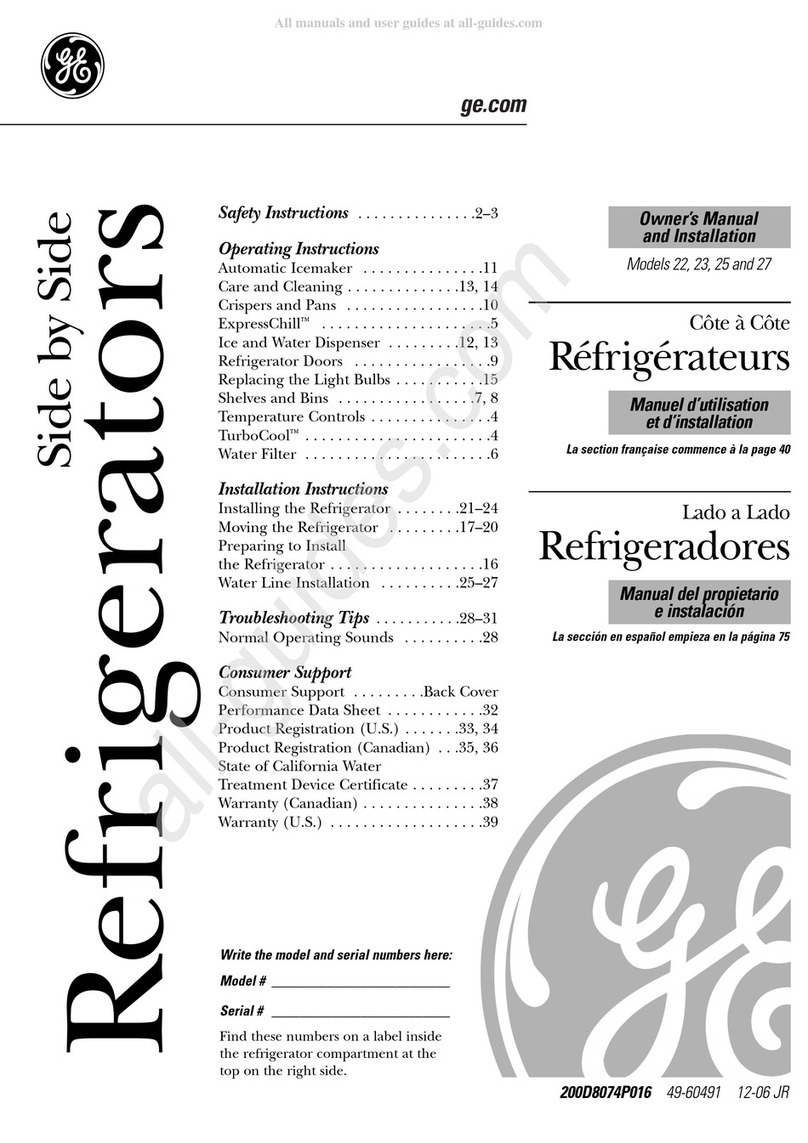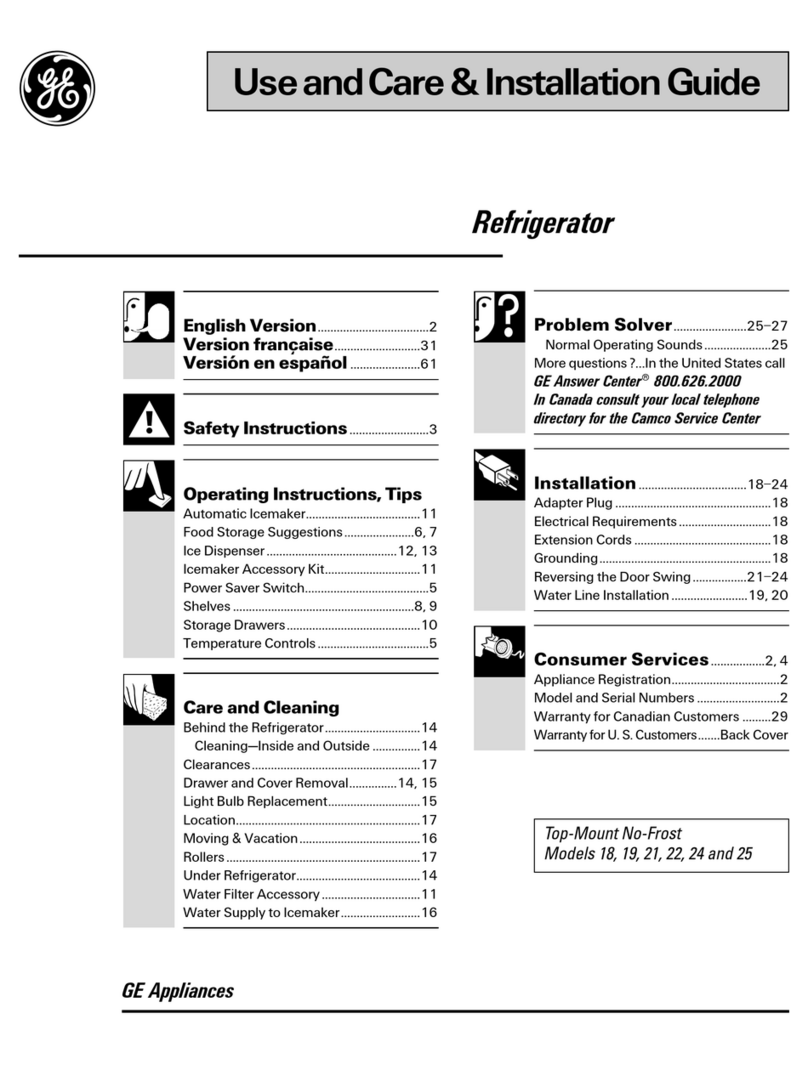6
Consumer Support Troubleshooting Tips Operating Instructions Safety InstructionsInstallation Instructions
About the water filter. (on some models)
Water Filter Cartridge
The water filter cartridge is located in the back upper right
corner of the refrigerator compartment.
When to Replace the Filter on Models With a
Replacement Indicator Light
There is a replacement indicator light for the water filter
cartridge on the dispenser. This light will turn orange to tell
you that you need to replace the filter soon.
The filter cartridge should be replaced when the
replacement indicator light turns red or if the flow of water
to the dispenser or icemaker decreases.
When to Replace the Filter on Models Without a
Replacement Indicator Light
The filter cartridge should be replaced every
six months
or earlier if the flow of water to the water dispenser or
icemaker decreases.
Removing the Filter Cartridge
If you are replacing the cartridge, first remove the old one
by slowly turning it to the left.
Do not
pull down on the
cartridge. A small amount of water may drip down.
Installing the Filter Cartridge
If you are replacing a
SmartWater
cartridge with
an adapter, it must be removed before installing the
cartridge. To remove the adapter, turn it to the left
about 1/4 turn.
If you are replacing a
Water by Culligan
cartridge,
leave the adapter in place. This adapter will stay in the
refrigerator when you replace future cartridges.
On models without a replacement indicator light,
apply the month and year sticker to the new cartridge
to remind you to replace the filter in
six months.
Fill the replacement cartridge with water from the tap
to allow for better flow from the dispenser immediately
after installation.
Line up the arrow on the cartridge and the cartridge
holder. Place the top of the new cartridge up inside the
holder.
Do not
push it up into the holder.
Slowly turn it to the right until the filter cartridge stops.
DO NOT OVERTIGHTEN.
As you turn the cartridge, it will
automatically raise itself into position. The cartridge will
move about 1/2 turn.
Run water from the dispenser for 3 minutes
(about 1-1/2 gallons) to clear the system and prevent
sputtering.
Press and hold the
WATER FILTER
pad (on some models)
on the dispenser for 3 seconds.
NOTE:
A newly-installed water filter cartridge may
cause
water to spurt
from the dispenser.
Filter Bypass Plug
You must use the filter bypass plug when a replacement
filter cartridge is not available. The dispenser and the
icemaker will not operate without the filter or filter
bypass plug.
To use the filter bypass plug on
Water by Culligan
models,
you must first remove the filter adapter from the cartridge
holder by turning it to the left.
If you have questions—visit our Website
at ge.com, or call 1.800.GE.CARES (1.800.432.2737).
Replacement filters:
To order additional filter cartridges in the United States,
visit our Website at ge.com, or call GE Parts and Accessories,
800.626.2002.
MSWF
Suggested Retail $36.95–41.95
Customers in Canada should consult the yellow pages
for the nearest Mabe Service Center.
Cartridge
Holder
Filter
Bypass
Plug
Filter
Bypass
Plug
SmartWater Water by Culligan
(appearance may vary)
With adapter Without adapter
